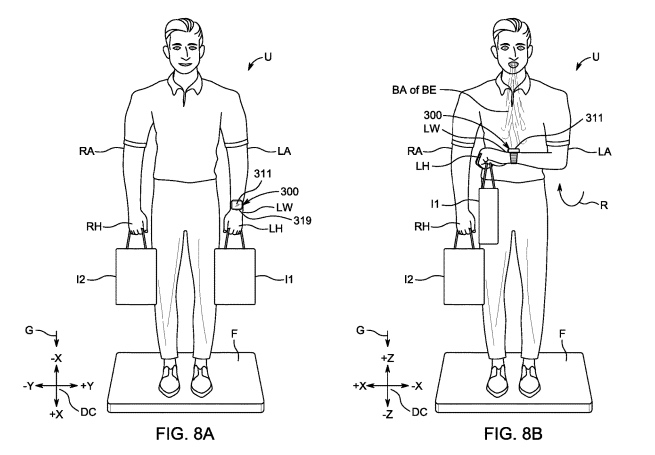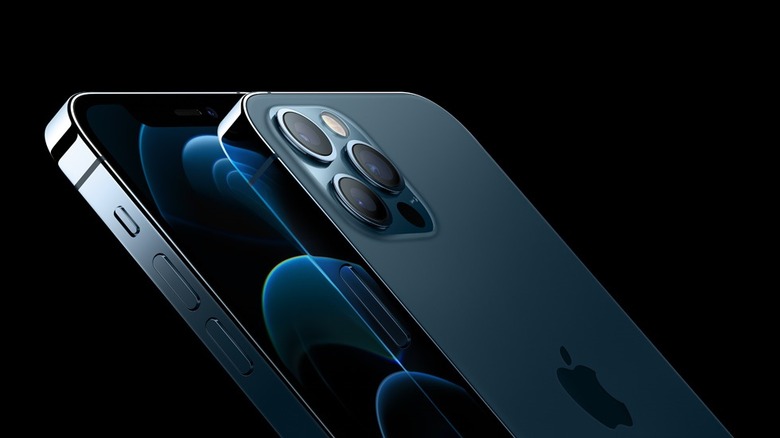Apple's Newest Invention For Controlling Your iPhone Is Like Nothing You've Ever Seen
One of the more bizarre Apple patents we've seen in quite some time details a method by which a user would be able to control functions on an Apple Watch or iPhone merely by blowing on it. In a patent that was fittingly published on April 1, Apple engineers detail how a device outfitted with special sensors would be able to detect when someone blows air on a device and, in turn, trigger certain actions.
As to how this type of functionality would play out in practical terms, Apple outlines that using a wearable device like a smartwatch requires two hands: one hand that holds or wears the device and a second hand "to physically interact with the device for providing user input commands for controlling the functionality of the electronic device."
There are instances, however, where a user might not be able to use his or her free hand to interact with the device. Imagine, for instance, someone trying to field a call on an Apple Watch or iPhone while holding bags of groceries, or a small child.
One of the illustrations in Apple's patent can be seen below:

In these scenarios, the user experience is lessened, which brings us to Apple's solution: blow event detection. According to Apple, a blow detection sensor would allow users to switch modes on a device or even activate actions like answering a call or checking the weather simply with a quick breath of air.
Notably, Apple's patent envisions a few implementations of how a blow detector might be integrated into a device:
As another example, an electronic device is provided that may include a device housing defining an interior space, a pressure sensor positioned at least partially within the interior space, a motion sensor positioned at least partially within the interior space, and a controller communicatively coupled to the pressure sensor and the motion sensor and operative to use pressure sensor data from the pressure sensor and motion sensor data from the motion sensor to detect a current of air blown on the device housing.
As yet another example, a method for operating an electronic device including a housing, a blow detection assembly positioned at least partially within the housing, and a processor is provided that may include detecting a blow event on the housing with the blow detection assembly and automatically triggering a new control mode of the processor based on the detecting.
While this type of feature would seemingly make more sense on a device like the Apple Watch, Apple's patent also references that it could be incorporated on an iPhone.
In light of the above, it's only natural to wonder what happens if an Apple Watch with a blow detection sensor is in a windy environment. Would this cause the device to go haywire? Well, as Apple details in its patent, the blow detection mechanism would only come into play once the device detects a Raise to Wake motion.
Apple routinely patents every new technology its engineers conjure up, so there's no guarantee that we'll ever see an Apple Watch or iPhone that can be controlled with one's breath. Still, there's no denying that there are some use-case scenarios where such a feature would prove to be somewhat useful.
